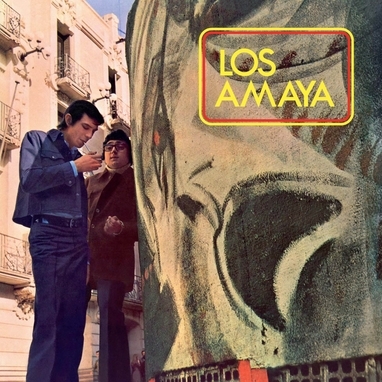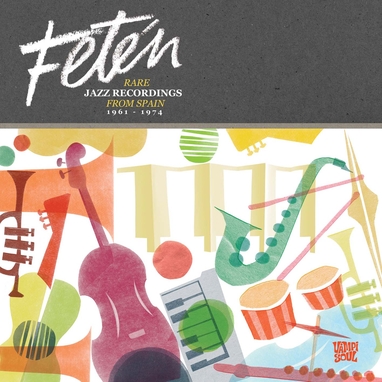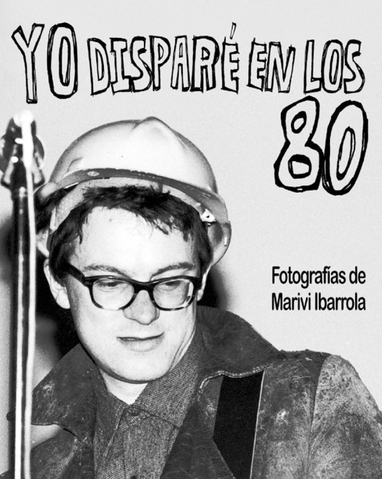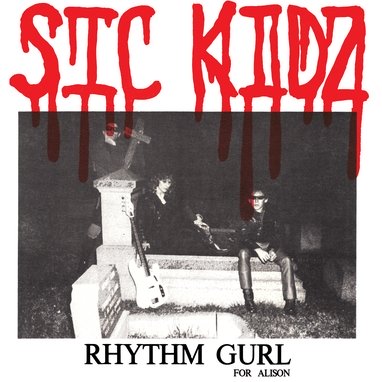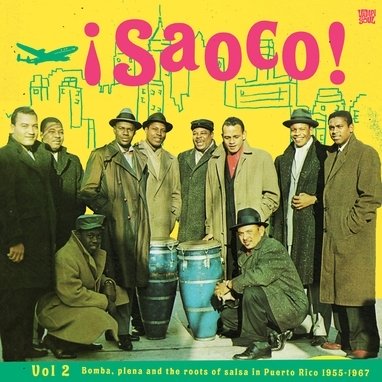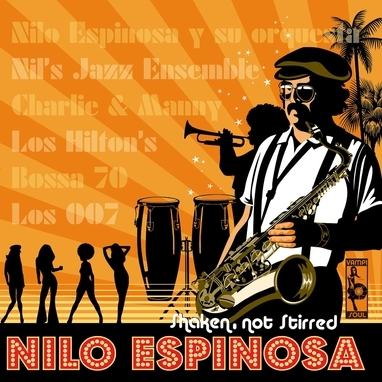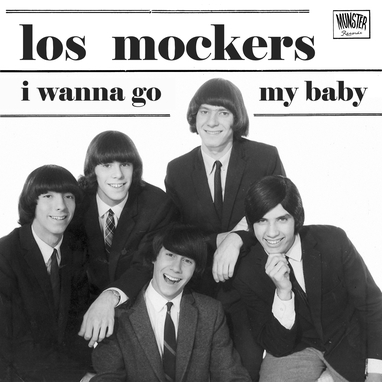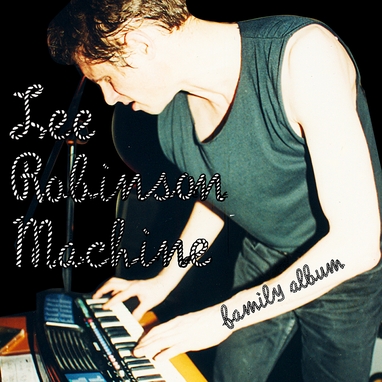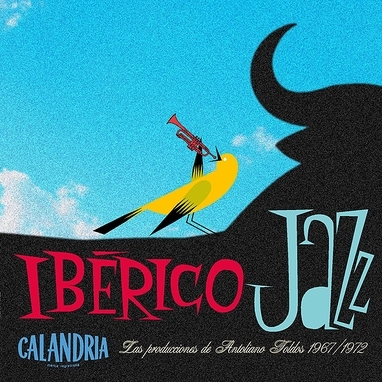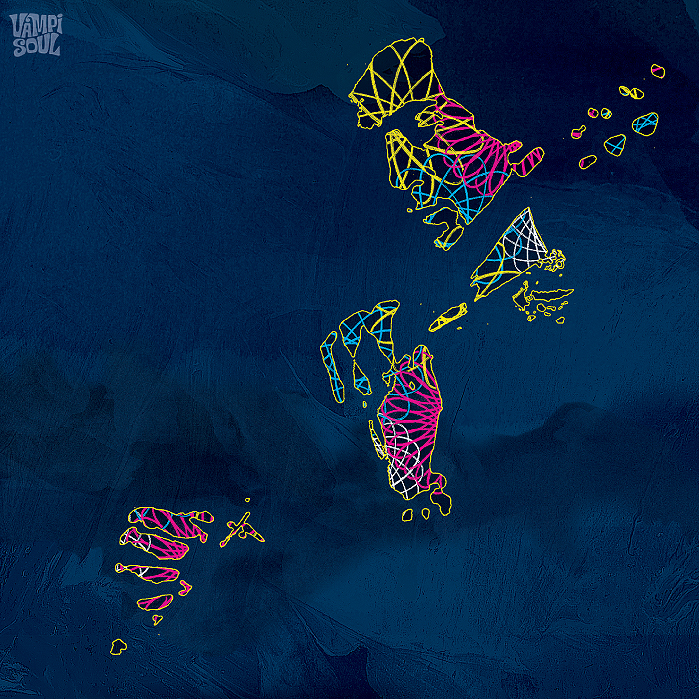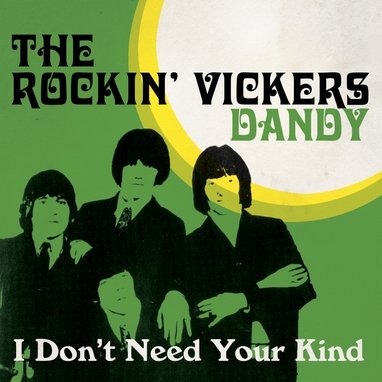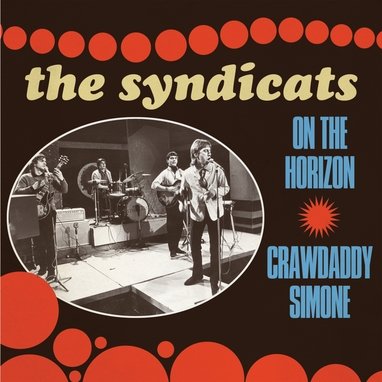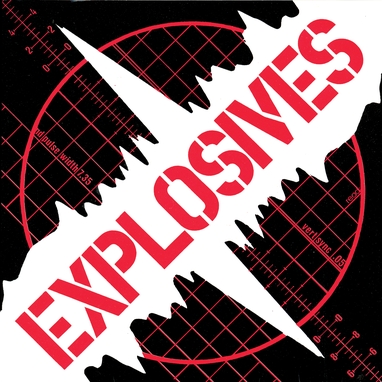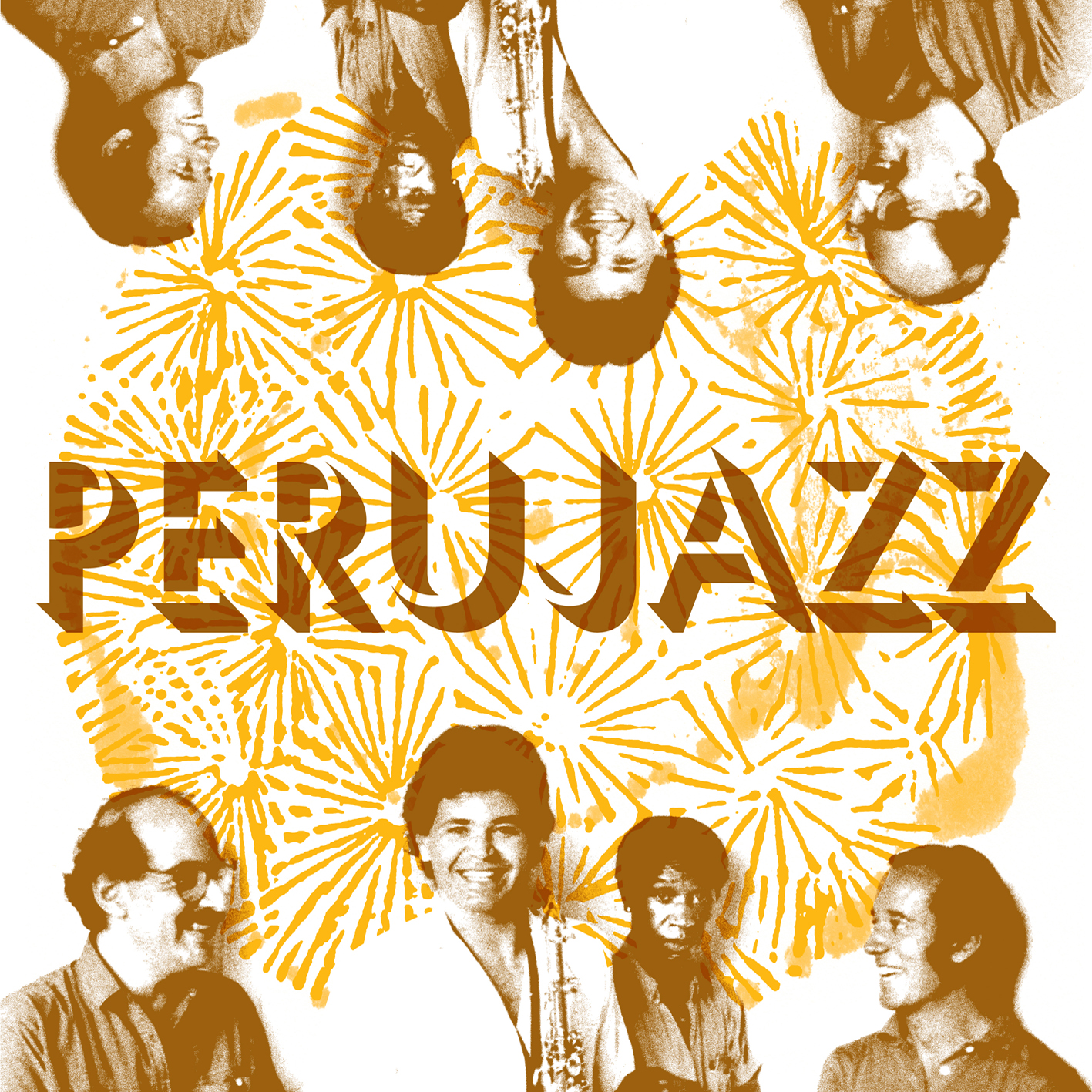Los Amaya
Los Amaya y su Combo Gitano
18,00€
Vinilísssimo
Los Amaya
Los Amaya y su Combo Gitano
Originally released in 1971, the debut by Los Amaya was a pivotal moment in the popularization of flamenco rumba, where rock’n’roll, pop, boogaloo, soul, salsa and plena exploded into gypsy music.
Released by EMI in 1971, the debut LP by brothers José (A Coruña, 1950) and Delfín (Uvieu, 1952) Amaya with their Gipsy Combo is the beginning and the end, the alpha and the omega of a cultural and musical movement, the rumba, that spread its infectious rhythm all over the dancefloors of Spain and beyond. What Los Amaya y su Combo Gitano achieved in this LP is a milestone, a place where nobody had gone before and few would reach later (not even themselves, even if their biggest popular successes, such as the international smash hit ‘Vete’, were yet to come). Lola Flores, el Príncipe Gitano or Dolores Abril had already longed for a typical yet modern Spain and for a beatnik gypsy. Bambino, La Terremoto and El Noi where already among us. Peret, Chacho and Antonio González, as others before them, had brought the Caribbean flavor to the flamenco-esque popular music that was becoming the flag of a country changing in shape and sound. But it is only when Los Amaya arrive that this pop prophecy becomes flesh: rock´n´roll, pop, boogaloo, soul, salsa and plena explode into gypsy music. Many elements can explain this miracle of a record. A gypsy identity “modern and from the big city”, as Peret sung. Their traditional interests (the music of their race running through their veins, being nephews of the immortal dancer Carmen Amaya). But also their modern tastes. In the brothel where they perform, they also listen to the records played by the policeman who manages: Latin dance hits of the day or little earlier. From this club at the legendary Carrer de la Cera in the Raval neighborhood of Barcelona, epicenter of the Catalonian rumba earthquake, and from that blessed turntable loaded with the best of Nuyorican record labels Tico, Fania, Alegre or Ansonia, Los Amaya built a perfect repertoire: ‘Caramelos’, their biggest hit for years, was originally a popular number for a young Celia Cruz with La Sonora Matancera (who had also popularized ‘Vive la vida hoy’, to which Los Amaya and their Combo apply an electric fuzz treatment, an innovation in the rumba). ‘En Casa de Pepe’ had been a hit composed by Boricua trombone player Mon Rivera. It is all a Puerto Rican thing: ‘Bailadores’, written by Héctor Rivera and made popular by the Joe Cuba Sextet, or an even saltier ‘Bacalao salao’, originally by Tito Rodríguez. From tender moments in the night club, perhaps, come jíbaro hits such as ‘Pena, tristeza y dolor” and ‘Qué mala suerte la mía’, both very successful for Los Amaya and both written by Toñín Romero, or ‘Ya la pagarás’ by Baltazar Carrero, who, like Romero, was a famous Puerto Rican hillbilly or “jíbaro” music singer. In the neighbourhood movie theaters, the brothers watch the spaghetti western films whose famous music scores they recreate here in two gypsyfied covers that Morricone must have heard pale with admiration and a touch of jealousy: “The Good, The Bad And The Ugly” and “For A Few Dollars More” (titled “La muerte tenía un precio” in Spain). They wrap it all up with a frantic ode to the Passion of Christ Our Savior, ‘En la cruz moría’. The last key element is the sound, both in form (a miracle of production: the whole quintet recording everything live into just two microphones) and in content, as these songs sound like Los Amaya and nobody else: the guitars, the high pitched vocal harmonies of the singing brothers, the ubiquitous Cuban bongós, the hands clapping, the constant jaleo of the encouraging exhortations, bravado, mouth whistle and whistling, cowbells, Far West bandits screaming… and everything played at top speed. David Menéndez
Productos relacionados
18,00€
Originally released in 1971, the debut by Los Amaya was a pivotal moment in the popularization of flamenco rumba, where rock’n’roll, pop, boogaloo, soul, salsa and plena exploded into gypsy music.
Released by EMI in 1971, the debut LP by brothers José (A Coruña, 1950) and Delfín (Uvieu, 1952) Amaya with their Gipsy Combo is the beginning and the end, the alpha and the omega of a cultural and musical movement, the rumba, that spread its infectious rhythm all over the dancefloors of Spain and beyond. What Los Amaya y su Combo Gitano achieved in this LP is a milestone, a place where nobody had gone before and few would reach later (not even themselves, even if their biggest popular successes, such as the international smash hit ‘Vete’, were yet to come). Lola Flores, el Príncipe Gitano or Dolores Abril had already longed for a typical yet modern Spain and for a beatnik gypsy. Bambino, La Terremoto and El Noi where already among us. Peret, Chacho and Antonio González, as others before them, had brought the Caribbean flavor to the flamenco-esque popular music that was becoming the flag of a country changing in shape and sound. But it is only when Los Amaya arrive that this pop prophecy becomes flesh: rock´n´roll, pop, boogaloo, soul, salsa and plena explode into gypsy music. Many elements can explain this miracle of a record. A gypsy identity “modern and from the big city”, as Peret sung. Their traditional interests (the music of their race running through their veins, being nephews of the immortal dancer Carmen Amaya). But also their modern tastes. In the brothel where they perform, they also listen to the records played by the policeman who manages: Latin dance hits of the day or little earlier. From this club at the legendary Carrer de la Cera in the Raval neighborhood of Barcelona, epicenter of the Catalonian rumba earthquake, and from that blessed turntable loaded with the best of Nuyorican record labels Tico, Fania, Alegre or Ansonia, Los Amaya built a perfect repertoire: ‘Caramelos’, their biggest hit for years, was originally a popular number for a young Celia Cruz with La Sonora Matancera (who had also popularized ‘Vive la vida hoy’, to which Los Amaya and their Combo apply an electric fuzz treatment, an innovation in the rumba). ‘En Casa de Pepe’ had been a hit composed by Boricua trombone player Mon Rivera. It is all a Puerto Rican thing: ‘Bailadores’, written by Héctor Rivera and made popular by the Joe Cuba Sextet, or an even saltier ‘Bacalao salao’, originally by Tito Rodríguez. From tender moments in the night club, perhaps, come jíbaro hits such as ‘Pena, tristeza y dolor” and ‘Qué mala suerte la mía’, both very successful for Los Amaya and both written by Toñín Romero, or ‘Ya la pagarás’ by Baltazar Carrero, who, like Romero, was a famous Puerto Rican hillbilly or “jíbaro” music singer. In the neighbourhood movie theaters, the brothers watch the spaghetti western films whose famous music scores they recreate here in two gypsyfied covers that Morricone must have heard pale with admiration and a touch of jealousy: “The Good, The Bad And The Ugly” and “For A Few Dollars More” (titled “La muerte tenía un precio” in Spain). They wrap it all up with a frantic ode to the Passion of Christ Our Savior, ‘En la cruz moría’. The last key element is the sound, both in form (a miracle of production: the whole quintet recording everything live into just two microphones) and in content, as these songs sound like Los Amaya and nobody else: the guitars, the high pitched vocal harmonies of the singing brothers, the ubiquitous Cuban bongós, the hands clapping, the constant jaleo of the encouraging exhortations, bravado, mouth whistle and whistling, cowbells, Far West bandits screaming… and everything played at top speed. David Menéndez
Productos relacionados
Los Amaya y su Combo Gitano
Originally released in 1971, the debut by Los Amaya was a pivotal moment in the popularization of flamenco rumba, where rock’n’roll, pop, boogaloo, soul, salsa and plena exploded into gypsy music.
Released by EMI in 1971, the debut LP by brothers José (A Coruña, 1950) and Delfín (Uvieu, 1952) Amaya with their Gipsy Combo is the beginning and the end, the alpha and the omega of a cultural and musical movement, the rumba, that spread its infectious rhythm all over the dancefloors of Spain and beyond. What Los Amaya y su Combo Gitano achieved in this LP is a milestone, a place where nobody had gone before and few would reach later (not even themselves, even if their biggest popular successes, such as the international smash hit ‘Vete’, were yet to come). Lola Flores, el Príncipe Gitano or Dolores Abril had already longed for a typical yet modern Spain and for a beatnik gypsy. Bambino, La Terremoto and El Noi where already among us. Peret, Chacho and Antonio González, as others before them, had brought the Caribbean flavor to the flamenco-esque popular music that was becoming the flag of a country changing in shape and sound. But it is only when Los Amaya arrive that this pop prophecy becomes flesh: rock´n´roll, pop, boogaloo, soul, salsa and plena explode into gypsy music. Many elements can explain this miracle of a record. A gypsy identity “modern and from the big city”, as Peret sung. Their traditional interests (the music of their race running through their veins, being nephews of the immortal dancer Carmen Amaya). But also their modern tastes. In the brothel where they perform, they also listen to the records played by the policeman who manages: Latin dance hits of the day or little earlier. From this club at the legendary Carrer de la Cera in the Raval neighborhood of Barcelona, epicenter of the Catalonian rumba earthquake, and from that blessed turntable loaded with the best of Nuyorican record labels Tico, Fania, Alegre or Ansonia, Los Amaya built a perfect repertoire: ‘Caramelos’, their biggest hit for years, was originally a popular number for a young Celia Cruz with La Sonora Matancera (who had also popularized ‘Vive la vida hoy’, to which Los Amaya and their Combo apply an electric fuzz treatment, an innovation in the rumba). ‘En Casa de Pepe’ had been a hit composed by Boricua trombone player Mon Rivera. It is all a Puerto Rican thing: ‘Bailadores’, written by Héctor Rivera and made popular by the Joe Cuba Sextet, or an even saltier ‘Bacalao salao’, originally by Tito Rodríguez. From tender moments in the night club, perhaps, come jíbaro hits such as ‘Pena, tristeza y dolor” and ‘Qué mala suerte la mía’, both very successful for Los Amaya and both written by Toñín Romero, or ‘Ya la pagarás’ by Baltazar Carrero, who, like Romero, was a famous Puerto Rican hillbilly or “jíbaro” music singer. In the neighbourhood movie theaters, the brothers watch the spaghetti western films whose famous music scores they recreate here in two gypsyfied covers that Morricone must have heard pale with admiration and a touch of jealousy: “The Good, The Bad And The Ugly” and “For A Few Dollars More” (titled “La muerte tenía un precio” in Spain). They wrap it all up with a frantic ode to the Passion of Christ Our Savior, ‘En la cruz moría’. The last key element is the sound, both in form (a miracle of production: the whole quintet recording everything live into just two microphones) and in content, as these songs sound like Los Amaya and nobody else: the guitars, the high pitched vocal harmonies of the singing brothers, the ubiquitous Cuban bongós, the hands clapping, the constant jaleo of the encouraging exhortations, bravado, mouth whistle and whistling, cowbells, Far West bandits screaming… and everything played at top speed. David Menéndez
Originally released in 1971, the debut by Los Amaya was a pivotal moment in the popularization of flamenco rumba, where rock’n’roll, pop, boogaloo, soul, salsa and plena exploded into gypsy music.
Released by EMI in 1971, the debut LP by brothers José (A Coruña, 1950) and Delfín (Uvieu, 1952) Amaya with their Gipsy Combo is the beginning and the end, the alpha and the omega of a cultural and musical movement, the rumba, that spread its infectious rhythm all over the dancefloors of Spain and beyond. What Los Amaya y su Combo Gitano achieved in this LP is a milestone, a place where nobody had gone before and few would reach later (not even themselves, even if their biggest popular successes, such as the international smash hit ‘Vete’, were yet to come). Lola Flores, el Príncipe Gitano or Dolores Abril had already longed for a typical yet modern Spain and for a beatnik gypsy. Bambino, La Terremoto and El Noi where already among us. Peret, Chacho and Antonio González, as others before them, had brought the Caribbean flavor to the flamenco-esque popular music that was becoming the flag of a country changing in shape and sound. But it is only when Los Amaya arrive that this pop prophecy becomes flesh: rock´n´roll, pop, boogaloo, soul, salsa and plena explode into gypsy music. Many elements can explain this miracle of a record. A gypsy identity “modern and from the big city”, as Peret sung. Their traditional interests (the music of their race running through their veins, being nephews of the immortal dancer Carmen Amaya). But also their modern tastes. In the brothel where they perform, they also listen to the records played by the policeman who manages: Latin dance hits of the day or little earlier. From this club at the legendary Carrer de la Cera in the Raval neighborhood of Barcelona, epicenter of the Catalonian rumba earthquake, and from that blessed turntable loaded with the best of Nuyorican record labels Tico, Fania, Alegre or Ansonia, Los Amaya built a perfect repertoire: ‘Caramelos’, their biggest hit for years, was originally a popular number for a young Celia Cruz with La Sonora Matancera (who had also popularized ‘Vive la vida hoy’, to which Los Amaya and their Combo apply an electric fuzz treatment, an innovation in the rumba). ‘En Casa de Pepe’ had been a hit composed by Boricua trombone player Mon Rivera. It is all a Puerto Rican thing: ‘Bailadores’, written by Héctor Rivera and made popular by the Joe Cuba Sextet, or an even saltier ‘Bacalao salao’, originally by Tito Rodríguez. From tender moments in the night club, perhaps, come jíbaro hits such as ‘Pena, tristeza y dolor” and ‘Qué mala suerte la mía’, both very successful for Los Amaya and both written by Toñín Romero, or ‘Ya la pagarás’ by Baltazar Carrero, who, like Romero, was a famous Puerto Rican hillbilly or “jíbaro” music singer. In the neighbourhood movie theaters, the brothers watch the spaghetti western films whose famous music scores they recreate here in two gypsyfied covers that Morricone must have heard pale with admiration and a touch of jealousy: “The Good, The Bad And The Ugly” and “For A Few Dollars More” (titled “La muerte tenía un precio” in Spain). They wrap it all up with a frantic ode to the Passion of Christ Our Savior, ‘En la cruz moría’. The last key element is the sound, both in form (a miracle of production: the whole quintet recording everything live into just two microphones) and in content, as these songs sound like Los Amaya and nobody else: the guitars, the high pitched vocal harmonies of the singing brothers, the ubiquitous Cuban bongós, the hands clapping, the constant jaleo of the encouraging exhortations, bravado, mouth whistle and whistling, cowbells, Far West bandits screaming… and everything played at top speed. David Menéndez

